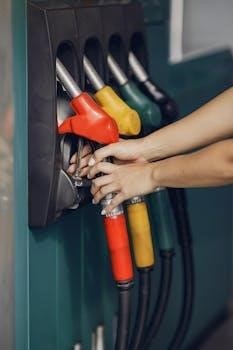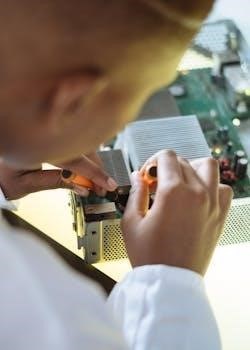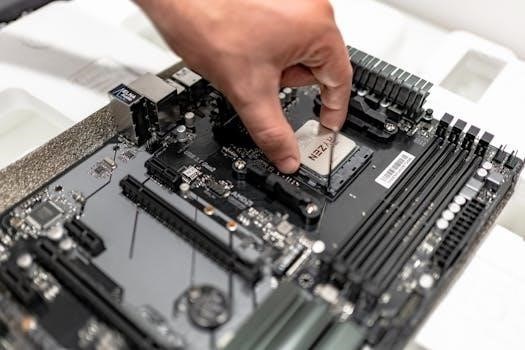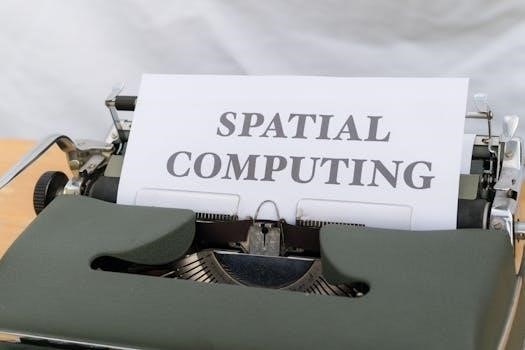hayward salt system manual

hayward salt system manual
Hayward Salt System Manual⁚ A Comprehensive Guide
Welcome to the comprehensive guide for your Hayward Salt System! This manual provides essential information for maintaining a sparkling‚ healthy pool. Learn about salt chlorination‚ setup‚ maintenance‚ and troubleshooting. Maximize your system’s efficiency and ensure years of trouble-free operation with this guide.
Hayward salt systems offer an innovative approach to pool sanitation‚ providing a gentler and more convenient alternative to traditional chlorine methods. These systems‚ like the AquaRite S3 and Salt & Swim 3C‚ automate chlorine generation using a low concentration of salt in your pool water. This results in softer‚ more natural-feeling water‚ eliminating the harsh chemical odors and potential skin irritation associated with conventional chlorine.
Hayward systems are designed for various pool sizes‚ with models suitable for both in-ground and above-ground pools up to 30‚000 gallons. The AquaRite S3‚ for instance‚ offers a broad range of salt concentration tolerance‚ ensuring efficient chlorine production regardless of salt levels. This flexibility simplifies maintenance and optimizes performance. By converting dissolved salt into chlorine through electrolysis‚ these systems maintain consistent sanitization‚ reducing the need for manual chlorine additions and creating a more enjoyable swimming experience. With user-friendly interfaces and advanced features‚ Hayward salt systems offer a smarter‚ simpler way to keep your pool water clean and healthy.
Understanding Salt Chlorination
Salt chlorination is a process where ordinary salt (sodium chloride) is converted into chlorine to sanitize pool water. Hayward salt systems utilize an electrolytic cell to perform this conversion. As saltwater passes through the cell‚ a low-voltage electrical current separates the sodium and chloride ions. The chloride ions are then converted into hypochlorous acid‚ which is the active sanitizing agent that kills bacteria‚ algae‚ and other contaminants in the pool water.
Unlike traditional chlorine systems that require manual addition of chlorine tablets or liquid‚ salt chlorination provides a continuous and automated sanitization process. The chlorine produced reverts back into salt after it has sanitized the water‚ allowing the process to repeat indefinitely. This cyclical nature minimizes the need for adding chemicals‚ providing a more stable and consistent chlorine level. The ideal salt level is typically between 2700-3400 ppm‚ with 3200 ppm being optimal for Hayward systems. Maintaining the correct salt concentration ensures efficient chlorine production and optimal pool water quality.
Key Features of Hayward Salt Systems
Hayward salt systems offer a range of features designed for efficient pool sanitization and ease of use. One prominent feature is automatic chlorine generation‚ which eliminates the need for manually adding chlorine. These systems maintain consistent chlorine levels by converting salt into chlorine through electrolysis‚ ensuring optimal water quality. Many models boast user-friendly control panels‚ simplifying adjustments and monitoring of salt levels‚ chlorine output‚ and system status.
Diagnostic capabilities are also key‚ with systems often displaying error codes to aid in troubleshooting. Some Hayward systems‚ like the AquaRite S3 Omni‚ offer smart control functions‚ allowing remote operation and monitoring. Energy efficiency is another highlight‚ as these systems are designed to minimize power consumption while maximizing chlorine production. Durable electrolytic cells ensure long-lasting performance‚ and features like automatic cell cleaning reduce maintenance requirements. Hayward’s Salt & Swim 3C is designed for in-ground pools up to 30‚000 gallons‚ featuring simple installation and operation.
Initial Setup and Installation
Proper initial setup and installation are crucial for the optimal performance of your Hayward salt system. Before beginning‚ ensure you have all necessary components‚ including the control unit‚ electrolytic cell‚ and any required plumbing fittings. Begin by selecting a suitable location for the control unit‚ ideally near your pool equipment and a power source. Mount the control unit securely‚ following the manufacturer’s instructions.
Next‚ install the electrolytic cell in the return line to the pool‚ ensuring correct water flow direction. Plumbing connections should be watertight to prevent leaks. After plumbing is complete‚ connect the cell to the control unit. Power up the unit and follow the on-screen prompts or manual instructions to configure initial settings‚ such as pool size and desired chlorine output. Adding the correct amount of salt to your pool is essential; refer to the salt level requirements section for guidance. Finally‚ test the system to confirm proper chlorine generation.

Salt Level Requirements and Adjustment
Maintaining the correct salt level is paramount for your Hayward salt system to function efficiently. The ideal salt concentration typically ranges between 2700-3400 ppm (parts per million)‚ with 3200 ppm being optimal for many models. Refer to your specific model’s manual for precise requirements. Insufficient salt levels reduce chlorine production‚ while excessive levels can damage the electrolytic cell and pool equipment.

To test your pool’s salt level‚ use a reliable salt test kit or take a water sample to a local pool supply store for professional analysis. If the salt level is low‚ add salt according to the chart in your manual‚ considering your pool’s volume. Add salt gradually‚ allowing it to dissolve completely before retesting. If the salt level is too high‚ partially drain the pool and refill it with fresh water to dilute the concentration. Regularly monitor and adjust salt levels to ensure optimal performance and longevity of your salt system.
Operating Modes and Control Panel
The Hayward salt system control panel provides intuitive access to various operating modes and settings. Familiarize yourself with the panel’s layout and functionality to optimize chlorine production and manage your pool’s sanitization. Common operating modes include automatic‚ super chlorination‚ and off.
The automatic mode allows the system to generate chlorine based on your pre-set output percentage. The super chlorination mode provides a temporary boost in chlorine production to address increased demand or algae growth. The off mode suspends chlorine generation entirely. Navigate the control panel using the buttons and display screen to adjust chlorine output‚ view diagnostic information‚ and configure system settings.
Understanding the control panel’s features enables you to fine-tune your salt system’s performance‚ ensuring consistent and effective pool sanitization. Refer to your Hayward salt system manual for specific instructions and detailed explanations of each operating mode and setting available on your model.
Regular Maintenance Procedures
Consistent maintenance is crucial for prolonging the lifespan and maximizing the efficiency of your Hayward salt system. Regular maintenance procedures include monitoring salt levels‚ inspecting the electrolytic cell‚ and cleaning the cell as needed. Maintaining proper water chemistry‚ including pH and alkalinity‚ is also essential for optimal performance and preventing damage to the system.
Check the salt level regularly‚ ideally weekly‚ and adjust as necessary to maintain the recommended range specified in your Hayward salt system manual. Inspect the electrolytic cell for scale buildup or debris‚ and clean it according to the manufacturer’s instructions. This typically involves soaking the cell in a diluted muriatic acid solution. Ensure to rinse the cell thoroughly after cleaning.
Additionally‚ periodically inspect all connections and wiring for any signs of corrosion or damage. By adhering to these regular maintenance procedures‚ you can ensure that your Hayward salt system operates efficiently and reliably‚ providing you with a clean and enjoyable swimming pool experience.
Electrolytic Cell Inspection and Cleaning
The electrolytic cell is the heart of your Hayward salt system‚ responsible for converting salt into chlorine. Regular inspection and cleaning of the cell are vital for maintaining optimal performance and extending its lifespan. The frequency of cleaning depends on water hardness and usage‚ but a good practice is to inspect the cell every three months.
To inspect the cell‚ first‚ turn off the power to the system and disconnect the cell from the plumbing. Visually examine the plates for any buildup of scale‚ calcium deposits‚ or debris. If buildup is present‚ cleaning is necessary. To clean the cell‚ prepare a solution of diluted muriatic acid (follow safety precautions!). Submerge the cell plates in the solution for a specified time‚ as recommended in your manual.
After soaking‚ thoroughly rinse the cell with clean water. Use a garden hose to dislodge any remaining debris. Reconnect the cell‚ ensuring all connections are secure. Regular cell inspection and cleaning will prevent reduced chlorine production and ensure your Hayward salt system operates efficiently for years to come.
Troubleshooting Common Issues
Even with proper maintenance‚ issues can arise with your Hayward salt system. One common problem is low chlorine production. This can be due to several factors‚ including low salt levels‚ a dirty electrolytic cell‚ or incorrect system settings. Verify salt levels are within the recommended range (2700-3400 ppm). Inspect and clean the cell if scale or debris is present. Ensure the system is operating in the correct mode and chlorine output is set appropriately.
Another common issue is the “Check Salt” or “Low Salt” indicator. This could mean low salt or a faulty salt sensor. Check the salt level with a reliable test kit. If the salt is adequate‚ the sensor may need recalibration or replacement. High salt levels can also cause problems‚ potentially damaging the cell or causing the system to shut down.
If you encounter persistent issues‚ consult your Hayward manual or contact a qualified pool professional. Identifying and addressing problems promptly will help prevent further damage and maintain optimal system performance.
Error Codes and Their Meanings
Hayward salt systems utilize error codes to communicate potential problems‚ aiding in troubleshooting. Understanding these codes is crucial for prompt issue resolution. A common error is “Low Salt‚” indicating insufficient salt levels in the pool water‚ requiring salt addition. Conversely‚ “High Salt” suggests excessive salt‚ potentially damaging the electrolytic cell. “Check Cell” typically signifies a problem with the cell itself‚ such as scaling‚ damage‚ or end-of-life.
“Low Flow” or “No Flow” errors indicate inadequate water flow through the system‚ which could stem from a clogged filter‚ closed valves‚ or a malfunctioning pump. “High Current” errors may suggest a problem with the cell or power supply. Refer to your specific Hayward model’s manual for a comprehensive list of error codes and their precise meanings.
The manual will outline recommended actions for each error‚ ranging from simple adjustments to professional servicing. Always consult the manual before attempting repairs‚ and prioritize safety when addressing any system malfunction. Proper interpretation of error codes ensures efficient troubleshooting and optimal system longevity.
Winterizing Your Hayward Salt System
Proper winterization is essential to protect your Hayward salt system from freezing temperatures and potential damage. Begin by thoroughly cleaning the electrolytic cell‚ removing any scale or debris. Disconnect the cell from the plumbing and store it indoors in a dry‚ temperature-controlled environment. Drain all water from the system components‚ including the cell housing and any connected plumbing.
For in-ground pools‚ lower the water level below the skimmer and return lines to prevent freezing and expansion. Use winterizing plugs to seal off these lines. Remove and store any sensors or probes that are susceptible to freezing. Inspect all connections and fittings for signs of wear or damage‚ and replace them as needed.
Cover the pool with a winter cover to protect it from debris and sunlight. Before starting the system in the spring‚ carefully inspect all components for damage and ensure they are properly reconnected. Following these winterization steps will help prolong the life of your Hayward salt system and ensure its optimal performance for years to come. Always consult your system’s manual for specific winterizing instructions.
Safety Precautions and Guidelines

Prioritizing safety is paramount when operating and maintaining your Hayward salt system. Always disconnect power to the system before performing any maintenance or repairs. Never attempt to disassemble or repair the electrolytic cell yourself; consult a qualified technician for assistance. Ensure proper ventilation when working around the system to avoid inhaling chlorine gas.
When handling salt‚ wear appropriate protective gear‚ such as gloves and eye protection‚ to prevent skin and eye irritation. Store salt in a dry‚ well-ventilated area away from children and pets. Regularly inspect the system for leaks or damage‚ and address any issues promptly. Follow all local and national electrical codes when installing or servicing the system.

Be aware of the potential hazards associated with chlorine gas and take precautions to avoid exposure. In case of accidental chlorine gas exposure‚ seek fresh air immediately and consult a medical professional if symptoms persist. Adhering to these safety precautions and guidelines will help ensure a safe and enjoyable pool experience while protecting yourself and others from potential harm. Always refer to the Hayward manual for detailed safety information.
Warranty Information and Support
Your Hayward salt system is backed by a limited warranty‚ offering peace of mind and protection against manufacturing defects. The specific terms and duration of the warranty may vary depending on the model and components of your system. Typically‚ Hayward warrants its SwimPure chlorination products to be free of defects in materials and workmanship for a period of three years‚ while Aqua Trol chlorination products have a one-year warranty.
To ensure your warranty remains valid‚ it’s crucial to adhere to all installation and operating instructions outlined in the manual. Improper installation or usage may void the warranty. In the event of a malfunction or defect‚ contact Hayward’s customer support or an authorized service center for assistance. Be prepared to provide proof of purchase and a detailed description of the issue.
Hayward offers comprehensive support resources to assist you with any questions or concerns you may have. Visit the Hayward website for FAQs‚ troubleshooting guides‚ and contact information. You can also reach out to their customer support team via phone or email. Remember to register your product online to receive important updates and notifications. With proper care and maintenance‚ your Hayward salt system will provide years of reliable performance‚ backed by a solid warranty and dedicated support.